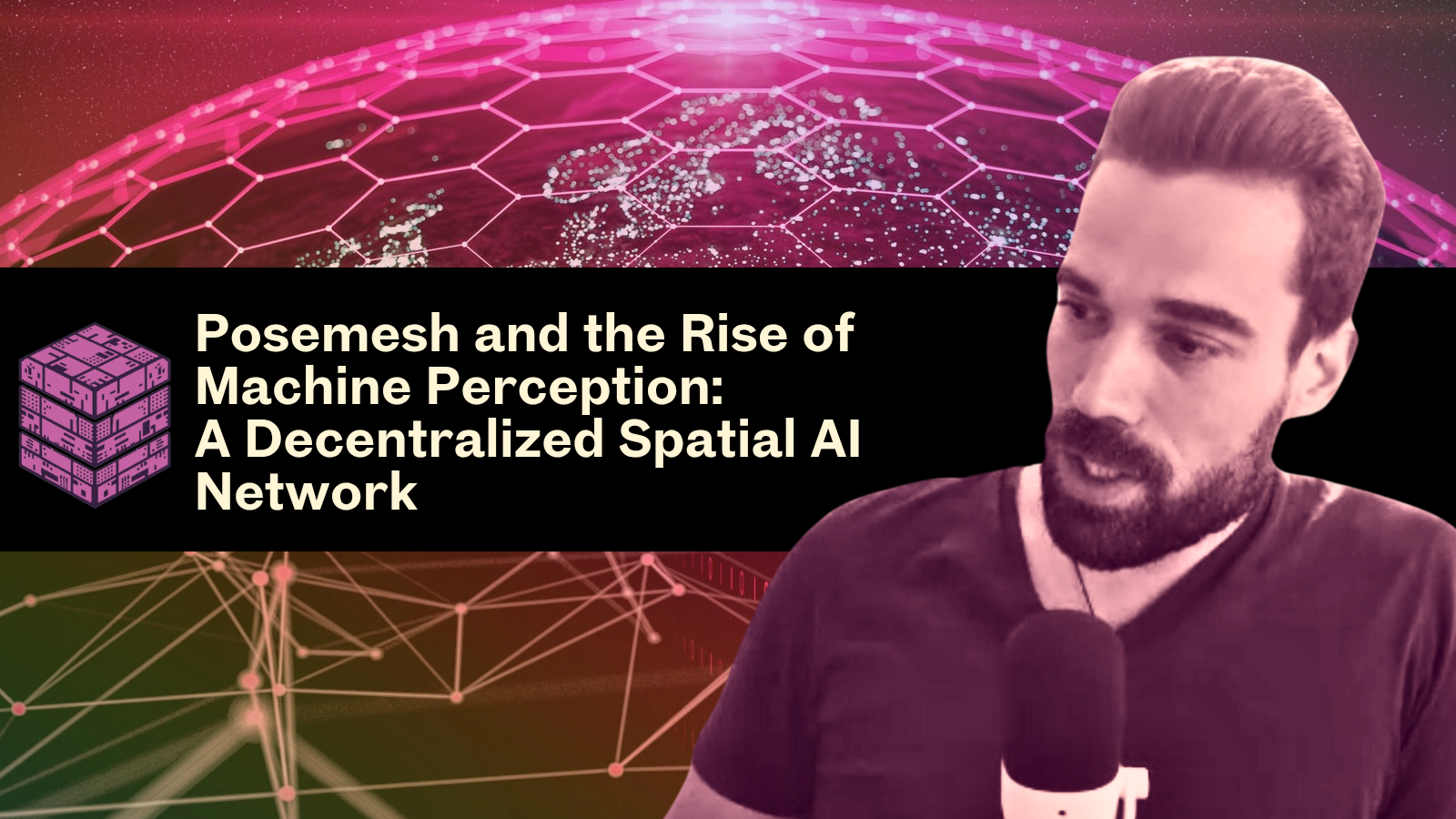Machines are entering our physical world, but how they perceive and move through space is still stuck in the past. GPS isn't precise enough, and cloud-based systems raise red flags for privacy.
Imagine a world where machines don’t just respond to digital commands, but actually understand physical space in real time navigating rooms, scanning environments, and communicating seamlessly with one another. That world isn’t science fiction anymore. It’s being built through Posemesh, the decentralized backbone of Auki Labs' Spatial AI network.
As AI becomes more embedded in the real world through robotics, AR glasses, and smart devices the need for accurate, dynamic, and secure spatial data becomes critical. Traditional systems rely on GPS or central servers, both of which have serious limitations when it comes to real-world navigation and user privacy.
In an exclusive interview with The Block and Beyond, Santeri, founder of Auki Labs, explained how they address these gaps with Posemesh: a protocol that decentralizes spatial mapping and machine perception to ensure both performance and autonomy.
Behind this vision is Auki Labs, a company headquartered in Hong Kong that is turning physical environments into machine-readable maps without compromising human privacy. Through Posemesh, they aim to create a new layer of infrastructure that supports real-time collaboration between AI, devices, and people.
A new layer of infrastructure for real-world AI
Posemesh is not just another protocol. It's a fully decentralized spatial computing network, designed to give machines a shared understanding of space while giving users full control over their data. It replaces traditional GPS with visual positioning and introduces decentralized compute and storage to power real-time AI systems.
Posemesh enables devices to:
- Access visual maps known as digital twins
- Share location and orientation data in real time
- Run spatial tasks on decentralized GPU nodes
- Store sensitive information on local servers instead of cloud platforms
"We call it a decentralized machine perception network... We're helping AI access the physical world and we're doing it without surrendering privacy."
Instead of routing all spatial data through centralized platforms like Meta or Google, Posemesh distributes these tasks across a network of lightweight nodes, each responsible for a different function.
Developers can begin building with Posemesh through the open-source tools and libraries available on Auki Labs’ GitHub, including SDKs for real-time spatial positioning, pose estimation, and decentralized map creation.
How Posemesh works under the hood
At the core of Posemesh are three types of decentralized nodes according to Santeri:
1. Relay Nodes: These are responsible for syncing real-time data like device positions and orientations. This allows multiple users or machines to see the same spatial content from different angles. To maintain latency under 26 milliseconds, relay servers must be physically close to the spatial experience.
2. Storage Nodes: These nodes host visual data such as digital twins, navigable surfaces (nav mesh), occlusion maps, and even recorded video. Because the data is stored locally or on user-owned devices, it never has to touch a centralized server.
3. Reconstruction Nodes: When a new space is scanned, the raw visual input produces a sparse point cloud. GPU-powered reconstruction nodes then convert this into a high-fidelity 3D mesh representation of the environment. Anyone with sufficient compute power can participate in this process.
"Because it is just micro compute, it's very little information. You can use even a Raspberry Pi to run this... A pose is X, Y, Z, which is a 3D coordinate plus rotation. And we update this pose across all the devices in real time."
The Posemesh protocol is designed to be lightweight and interoperable. Core components, like the real-time sync service and spatial anchoring engine, are modular and actively maintained in the GitHub repository, encouraging community collaboration and extensibility.
Built for real-time, real-world applications
Posemesh isn’t theoretical. It’s already powering products across consumer and enterprise sectors.
Retail stores use Auki Labs’ Cactus platform to build persistent digital twins of their layouts. These maps help staff locate items, reorganize shelves, and even direct robots to update the store overnight. All of this is done without sending video feeds or customer data to third-party servers.
The Athena robot, built on top of Posemesh infrastructure, autonomously patrols and scans commercial environments like supermarkets after hours. By morning, it updates digital twins to reflect physical changes in layout or stock, allowing the system to stay fully synchronized with the real world.
Consumers, meanwhile, can use the McKenna app to build AR environments in their own homes using QR codes. These spaces are persistent, shareable, and completely owned by the user.
"When spatial computers visit these spaces, they query from this server and ask for information. They only get the information they're asking for, not the entire digital layer."
Why decentralization matters for Spatial AI
Centralized spatial systems come with serious risks. AR glasses from companies like Meta can collect visual data of your surroundings even inside your home and upload it to corporate servers. That data could include everything from room layouts to facial expressions.
"They'll see what we see. They'll have a visual map of our homes. They'll hear what we say. They'll look at our pupil dilation to figure out how we feel at every point."
Posemesh flips that model. Instead of giving away your personal environment, you can choose what to share and what to keep private. You can host your own data. You can even earn rewards for contributing to the system.
This isn’t just a matter of ethics. It’s a new economic model for the age of machine perception.
Posemesh as a foundation for the machine economy
Spatial AI needs infrastructure. Machines need maps, data, and a way to navigate the world. Posemesh offers all of that without creating another surveillance empire.
As the physical world becomes digitized, Posemesh is building a decentralized Internet of Places, where location data is accurate, private, and user-owned.
It gives machines eyes, but it keeps humans in control.
To explore Posemesh tools, protocols, and contribute to the ecosystem, developers can visit github.com/aukilabs and join a growing open-source community that is shaping the spatial web.
Check out our full interview on YouTube.











